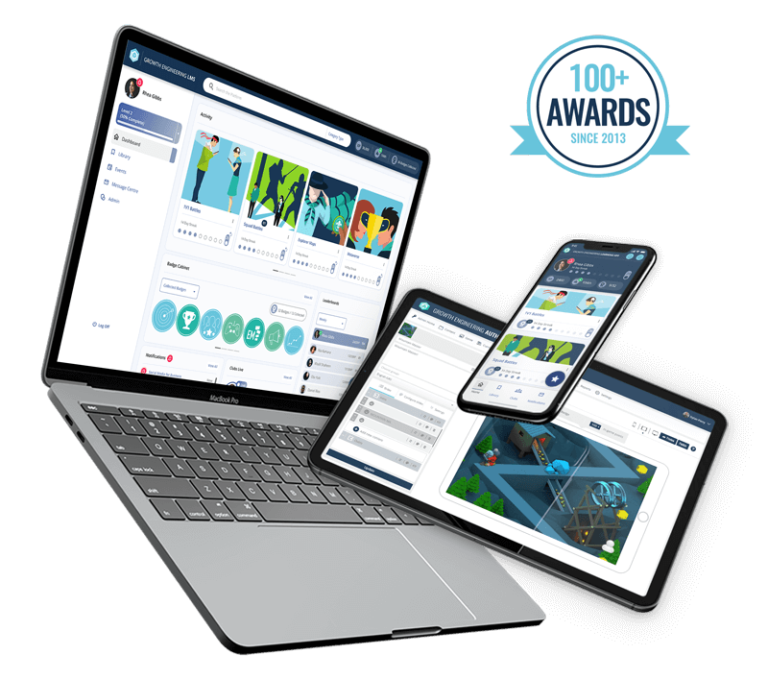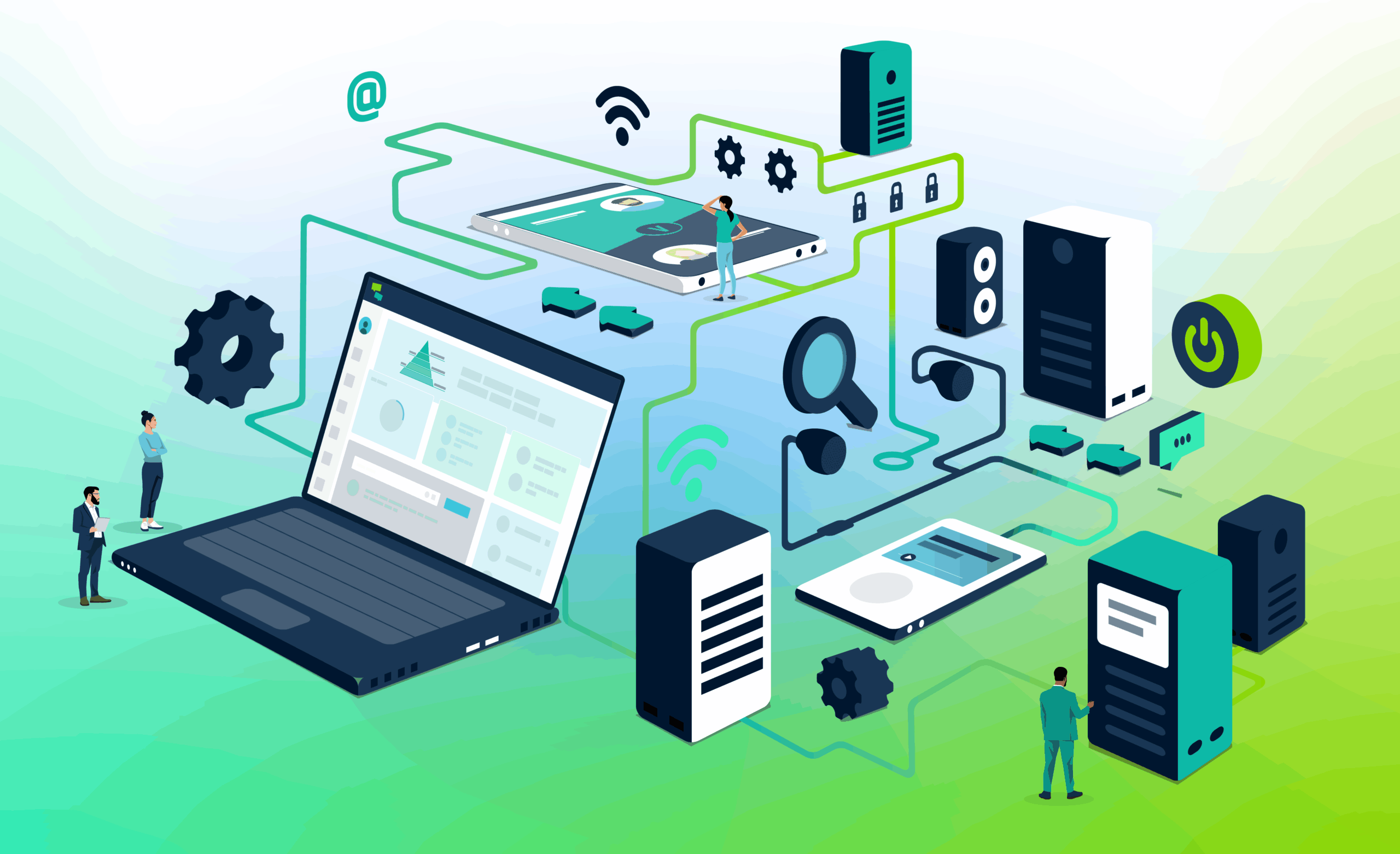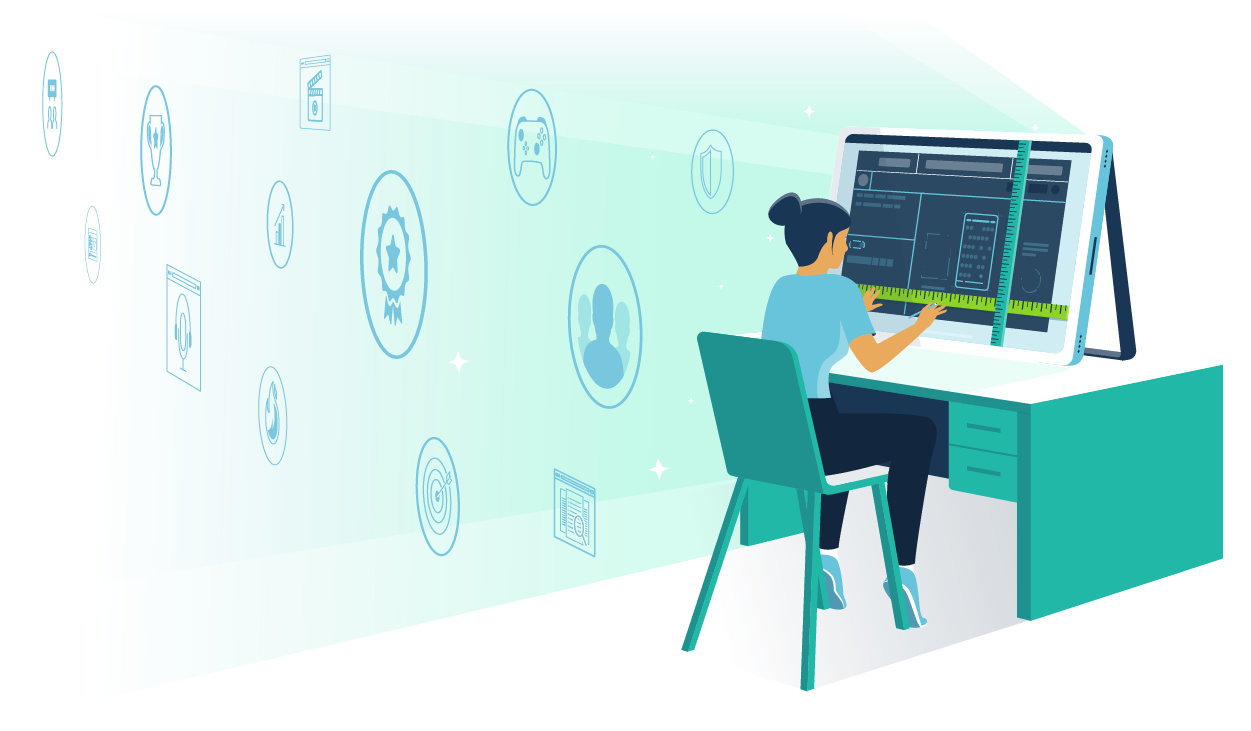 You have probably heard of an LMS or LXP. But have you heard of an LCMS?. If you haven’t, you’re not alone. In fact, it’s very difficult to find a clear description of a learning content management system (LCMS)!
You have probably heard of an LMS or LXP. But have you heard of an LCMS?. If you haven’t, you’re not alone. In fact, it’s very difficult to find a clear description of a learning content management system (LCMS)!
eLearning tools often get tangled in their definitions and use cases. That makes it harder to understand the full purpose, power and benefits an LCMS can have as a part of your digital training programme.
With this in mind, today we are going to jump right into the world of learning content management systems and give you a clear understanding of the tool.
Are you ready? Let’s go!
CMS + LMS = LCMS
Most individuals in the L&D space are familiar with learning management systems, also known as LMSs. CMS, on the other hand, stands for content management system.
Combined, these acronyms create a learning content management system, or an LCMS. All these systems are very different and address unique business challenges.
CMS
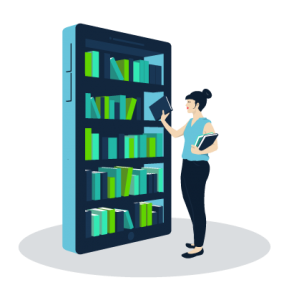
A content management system is essentially a library that stores all your material. This includes training manuals, company policy, documents, educational tools and other relevant company resources.
As such, a CMS organises important materials in a centralised location to provide easy access for your users. Whilst it may host learning content, it has not been designed specifically for this purpose, unlike the next system we’ll look at.
LMS
The primary function of a learning management system is to administer, assign, track and access learning content.
This is where your audience will come to access their training content. Typically, these learning experiences will have been produced outside of the system and uploaded onto the platform.
In other words, an LMS manages and delivers online learning activities for your entire organisation. It automates and provides administration for training units, lessons, quizzes and other learning events.
LCMS
As you know by now, LCMS stands for a learning content management system. It is a platform that allows you to create, manage, host, deliver and track online learning content.
In fact, you can think of it as your one-stop shop for eLearning, from creation to delivery. Only an LCMS can manage the full content lifecycle.
As such, an LCMS is an effective tool for organisations as the platform integrates authoring, delivery, publishing and analysis of content in a multi-user environment.
The Difference
Still confused about the differences between all these platforms and acronyms? You are not the only one struggling to differentiate all these terms!
LMS Vs LCMS
There is some crossover between LCMSs and LMSs, and it doesn’t help that their names are similar too. With this in mind, let’s explore what the extra ‘C’ brings to the table!
Essentially, the difference between an LMS and an LCMS is the audience they target and what they specialise in.
While both platforms provide some similar features, like extensive reporting tools, an LMS focuses more on learners and providing effective learning experiences.
An LCMS, on the other hand, targets content creators, instructional designers (IDs) and subject matter experts (SMEs). It focuses on efficient content creation and management.
LCMS Vs Authoring Tool
Does this mean that an LCMS is an authoring tool? Simply put, no.
There are some key details that differentiate LCMSs from content authoring tools. An authoring tool allows you to create eLearning units. You then upload this content to another platform, like an LMS or LXP.

By providing a centralised location for both content creation and curation, cloud-based LCMSs offer more flexible and efficient workflows compared to your traditional authoring tools.
In addition, while authoring tools help you to design efficient content, you cannot store or track the efficiency within your authoring tool. An LCMS, on the other hand, provides you with tools to track the success of your content.
There is a handy rule that helps you to differentiate these tools! All LCMSs allow you to author content, but not all authoring tools are LCMSs.
Key LCMS Functionality
So, what features and functionality does an LCMS typically offer? Let’s take a look!
Centralised Content Management
An LCMS enables you to create, store and search for content, all in one place. This single-source centralised content repository is an excellent way to eliminate content silos and typical management issues.
Your learning content management system will offer search options that help you find content quickly and at the point of need. Similarly, your content creators can search the library for existing chunks of knowledge of any size.
In addition, LCMSs come with built-in reporting suites that help your IDs to see exactly where each content unit has been used and reused. This centralised approach to content management is at the heart of learning content management systems.
Rapid Authoring and Reusability
Within an LCMS, content authoring is usually conceived by single-source. This means that you only produce content once and then repurpose it into different output formats. As such, an LCMS will typically streamline your content production processes.

After all, your LCMS allows for rapid content authoring and reusability. In fact, this platform helps you to repurpose content without starting from scratch each time. Repurposing content helps your IDs save time and also improves the consistency of your training content.
In a nutshell, an LCMS allows you to create learning assets, curate existing content for assembly and reuse and maintain your existing content in a centralised location to ensure it’s always up to date.
Multi-Format Asset Management
LCMSs come with tools that allow you to manage all of your learning materials quickly and easily. As a result, you can store, organise and edit, for instance, your multimedia, fonts and captions in just a few clicks.
These platforms give your IDs the flexibility to publish content from one source and output it in many ways. These outputs could be a Word document, PDF, SCORM eLearning unit, slideshow or something else. This, in turn, helps you to make your training programme content more rich and dynamic.
In addition, multi-format asset management enables you to run updates across all your content projects in one go. Talk about saving more time and resources!
Comprehensive Learner Analytics

Effective reporting is the key to successful training interventions. Learning content management systems typically come with extensive tracking options. These metrics help you to determine how your users interact with your learning content.
In fact, some LCMSs offer more in-depth analytics tools than your average LMSs. As a result, you can get an accurate snapshot of your content engagement and performance.
In addition, your LCMS allows you to filter these reports by region, location or department. This helps you to identify any prevailing content consumption trends so that you can refine your long-term content plan.
Collaborative Authoring
One person writes a content unit, the next one provides their expertise, and the third provides feedback on the draft. After the first set of changes, the content moves to the next person, and the ball keeps rolling.
These constant feedback rounds can be extremely time-consuming and even disorganised. Luckily, an LCMS supports collaborative authoring and allows you and your team to author and review content projects collaboratively in real-time.
For instance, one of your content creators can be working on one section while another is focusing on the next. And all this can happen without slowing down the delivery time as your content creators can see each other’s edits.
The built-in web-based review tools and granular permissions make the feedback process streamlined and fast. As a result, with an LCMS, you can work smarter and launch your eLearning content in a more agile manner than before.
Integrations
A flexible learning content management system allows you to integrate with external tools, resources and content while still supporting centralised content management. These tools further simplify the administrative workflow without taking control of the content.
Common LCMS integrations include:

- LCMS and LMS: deliver digital content created in an LCMS as a part of organised online learning interventions on an LMS.
- HR software and LCMS: offer personalised learning content to employees based on their roles, skills and responsibilities.
- LCMS and Business Intelligence software: improve your eLearning content based on metrics collected in your BI system.
Translation Workflows
Content localisation is essential in today’s globally connected world. After all, your learners may be in different countries and speak various languages. But we all know how painful translations and localisation can be without the right tools.
The best LCMSs offer effective translation workflows that simplify the process significantly. Some will even allow you to create multi-SCORM modules that wrap all your language variations up in one file.
In addition, many LCMSs are able to generate XLIFF files that are the standard format used by translation providers. This means that your content curators can quickly export content, get it translated and easily import it back into your system.
Benefits of LCMS
Learning content management systems come with vast benefits:
1. Supports the Full Content Lifecycle
While all these benefits derive from the fact that an LCMS centralises your content creation, distribution and management, one of the main benefits is how this supports your whole content lifecycle.
As a result, you no longer have to get separate platforms for all these different steps. This helps you to stay on top of your full content lifecycle easier than ever before. After all, you create your training material in the same platform you use to distribute and track its success.
As such, an LCMS can help you with tasks from content planning and creation to effective tracking and analysis.
2. Increased Collaboration
An LCMS typically offers a great platform for content creation collaboration. As such, if your organisation often requires staff members to work together to create new courses or material, an LCMS might just be the option for you.

After all, it can be very helpful to have a centralised hub where your team can work on creating some awesome eLearning content together. This content can then be published in a variety of multimedia formats, such as SCORM, video or PDF.
There is no longer danger of documents getting mislaid, overwritten or muddled! On top of that, did you know that better collaboration tools can increase workplace productivity by a whopping 30%?
3. Empowered Content Creators
High-quality, relevant content is at the heart of any good training programme. The content tools of an LCMS empower your instructional designers and content creators to create that content that produces high-value learning experiences.
On top of content creation, these content platforms allow your instructional designers to track their efforts. LMCSs offer vast reporting capabilities that help you craft better training experiences.
You can identify what content is relevant and effective and what needs more work. This is essential as 60% of today’s learners want to have access to content that meets their specific needs.
4. More Efficient Course Management
An LCMS makes it much easier and more straightforward to build high-quality content. Similarly, presenting information and valuable resources in one centralised location means that the whole course management process becomes more efficient.
This means that your administrators, teachers, and support staff can reduce the time they typically spend putting together learning content or full-on learning courses.
They can then use the time and resources they’ve saved to focus on managing and maintaining their content.
5. Reduced Training Time
In 1748, Benjamin Franklin wrote the famous quote, “Remember that time is money”. These words still hold great relevance in today’s society, perhaps even more than back in the 1740s.
Today’s learners are busy, stretched and often stressed. As a result, creating lengthy face-to-face training programmes can be very costly for organisations.
Creating relevant training materials costs time and money. But there’s also an opportunity cost. After all, training takes employees away from their jobs for hours on end.
An LCMS helps you cut down this training time by optimising your eLearning content to your learners’ needs.
For instance, you can start your course with a test to get an understanding of your learners’ current skill levels. Then, you can create and deliver content that is ensured to bridge any prevailing skills gaps!
6. Decreased Costs

While 41% of organisations increased their L&D budgets last year, and 49% plan to do so this year, no one likes to waste money! Luckily, an LCMS typically enjoys lower costs and can help you to make the most of your L&D budget.
How? An LCMS makes it easy to reuse and repurpose content multiple times. Similarly, creating multiple versions of a course is easier than ever. These time savings will help you to decrease your overall course development costs significantly.
What’s more, you can save on your stand-alone software licences. After all, an LCMS includes all the tools you need for effective content creation and learning distribution.
7. Ease of Intelligent Automation
Powerful automation possibilities are one of the main advantages of a high-quality LCMS. For instance, you can use your learning content management system to create intelligent content templates that will auto-populate with relevant resources.
These efficient content automation opportunities can be extremely useful when you put together revision materials, design teaching resources and manage your assessment process. After all, these materials typically take a long time to produce.
8. Personalisation
Personalisation is a great way to ensure that new information reaches the right area of your brain by making information more relevant to your learners. As such, personalising your content helps your learners to store new knowledge and skills more effectively.
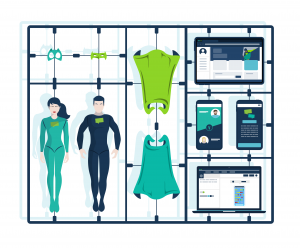
What’s more, 80% of survey respondents agreed that curation and personalisation are a priority for their organisation. Today’s intelligent LCMSs cater to that need.
You can curate learning content that is personalised according to your learners’ individual needs. Similarly, you can adapt your training content format and length effortlessly according to unique needs, by taking advantage of the content you have curated previously.
This personalised content can lead to higher learning impact and knowledge retention.
9. Faster Learning Outcomes
Last but not least, an LCMS can help you to see significant improvements in learning outcomes. After all, it optimises your content creation process and optimises your content to meet unique learner needs.
Your administrators have more time and resources to create and manage your training courses. Furthermore, effective reporting tools make sure that you can analyse your course effectively and make important changes.
Similarly, increasing automation and personalised content helps you to improve your training effectiveness. Together, these benefits allow you to improve learning outcomes and hit your goals faster.
Is An LCMS Right For My Training Needs?
While an LCMS comes loaded with benefits, it may not be right for your specific training content needs. In fact, learning content management systems are generally not as feature-rich as LMSs or LXPs.
Despite the additional reporting or learning tools, the main focus of an LCMS is collaborative content creation and management. As such, these platforms don’t offer more advanced training features.
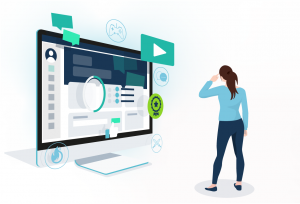
In addition, many LMSs nowadays come with built-in authoring tools. This has served to muddy the distinction between an LMS and an LCMS even further. Similarly, many LMS providers offer efficient content tools on top of their learning platforms.
For instance, here at Growth Engineering, we provide an LMS, learning app and authoring tool as part of a single integrated learning ecosystem.
As such, let’s have a look at when an LCMS, LMS or combination of the platforms are best suited for your needs:
LCMS
The volume of your learning content is a helpful indicator to determine if a learning content management system is the best option for you. After all, the more content you need, the greater the benefit you can get from your LCMS.
An LCMS is an effective tool if you need various output formats to serve your learning audience. Similarly, you’ll only need this platform if you want to create and maintain your eLearning content in-house, as content creation is a key LCMS feature.
If you have a complex learning audience, it may be better to invest in an LCMS instead of an authoring tool. The more you personalise content to accommodate learners from different departments, teams, geographical regions or languages, the more benefit you can gain from your LCMS.
Last but not least, learning content management systems are excellent platforms if you have many people involved in the content production process. If your traditional content production cycle is long, chances are that your content team will benefit from an LCMS and its built-in collaboration tools.
Ultimately, an LCMS is a good investment when you want to increase content management efficiency and decrease the amount of time and money you spend authoring your content.
LMS
Learning management systems are an excellent way to produce both eLearning and blended training programmes. After all, you can easily create digital or blended learning pathways that you can track effectively in just a few clicks.
As such, an LMS is an excellent platform to improve your learning experiences. You can add various innovative features, like game mechanics, social learning tools and microlearning units to supercharge your learner engagement and skills levels.
Similarly, an LMS is a great choice if you already have a separate content authoring tool or if you outsource your content creation activities. This means you have no use for the built-in content creation tools that an LCMS offers.
Next-gen LMSs, like Growth Engineering LMS, also offer vast tracking possibilities ranging from content completions and test results to knowledge-sharing and engagement. As such, these platforms are effective even with the largest learner audiences.
Integrated LMS and LCMS
While most organisations typically integrate an LMS with an authoring tool, you can also integrate an LMS and LCMS together to create the ultimate learning and content solution. In most instances, this is only relevant if you have a real mix of learning interventions.
Integrating these platforms is beneficial if you want to have a central place for learners to access their learning, but you don’t want to compromise on content creation and maintenance.
Combining these two platforms also expands your tracking possibilities, as both solutions typically offer in-depth reporting tools. As such, you can use your LMS reporting suite to track learning impact and engagement and your LCMS to track all things content!
Final Words
A learning content management system can help you optimise your content creation and management processes. The vast benefits mean that an LCMS has the power to bring big improvements to your organisation.
However, you should take care to ensure you understand the differences between an LCMS, LMS, LXP and an authoring tool. That way you can ensure you pick the right mix of solutions for your organisation.
With an LCMS, you can tackle any content creation challenge. From centralised and collaborative processes, in-depth analytics, translation workflows and rapid authoring, these platforms help your content creators take your training material to the next level!
Looking to create more impactful training content? Our ‘Ultimate eLearning Instructional Design Guidebook’ will guide your way!
Unlimited Learner Engagement on
The Impact Suite
